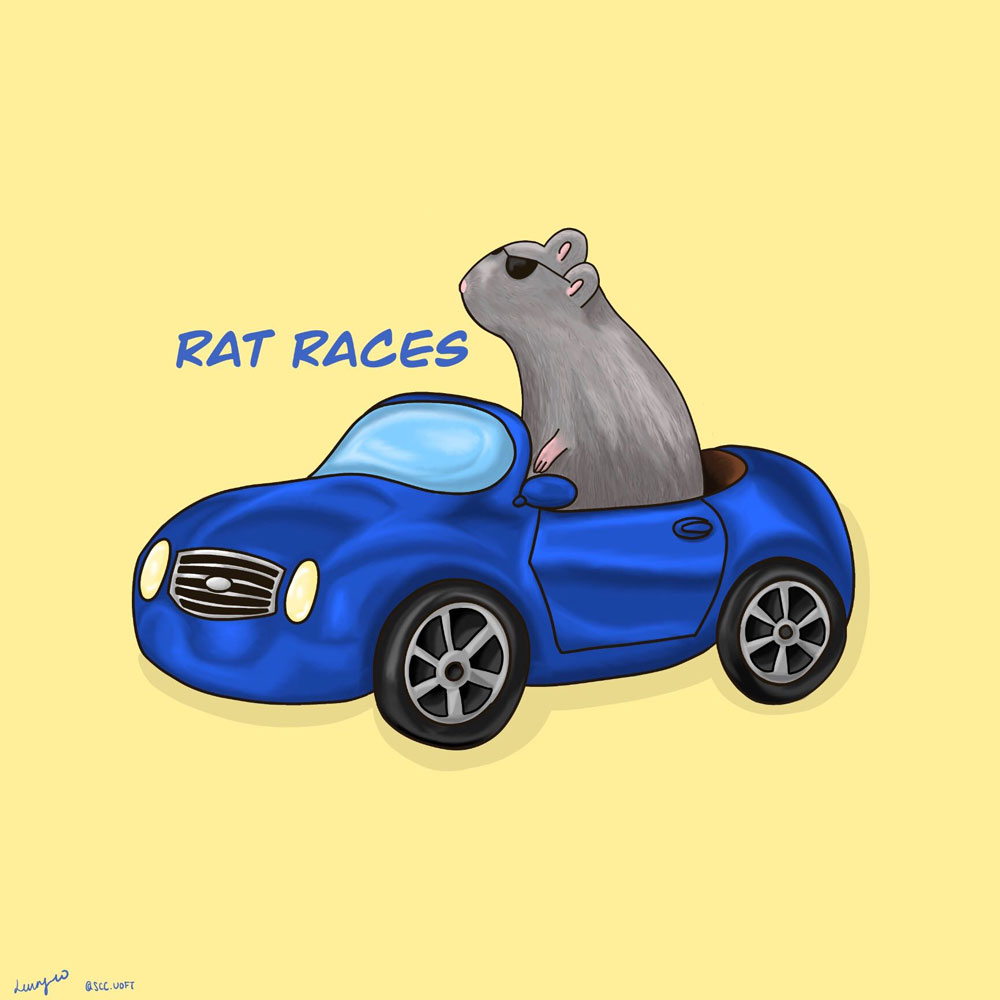
Written by Hasan Galib
Illustrated by Winsy Leung
It’s the year 2019, and although flying cars and hover boards are not yet a reality, you can rest assured knowing that rats can now drive cars! That’s right, scientists at the University of Richmond in Virginia have succeeded in teaching rats how to operate tiny, rat-sized vehicles.
Tiny cars were constructed using clear plastic bottles with an aluminium floor. They were also adorned with copper bars that the rat could manipulate to steer the car in different directions. A circuit in the car was constructed so that a rat could stand on the floor and touch the bar with their paws, and the car would move forward.
The results from the study showed that learning to drive seemed to relax the rats. This was assessed by measuring the levels of two hormones: corticosterone, a marker of stress, and dehydroepiandrosterone, which counteracts stress. The ratio of dehydroepiandrosterone to corticosterone in the rats’ faeces increased over the course of their driving training. In support of this idea, the team found that rats who drove independently had higher dehydroepiandrosterone levels and were less stressed than rats who were driven around as passengers in remote-controlled cars. Furthermore, the ability of rats to drive these cars demonstrates the “neuroplasticity” of their brains, which refers to their ability to respond flexibly to novel challenges.
The findings of this experiment not only demonstrate rats’ driving skills, but also have implications for various fields of study. Previous behavioral experiments typically involved rats completing mazes or manipulating objects to gain rewards. Although this has been proven useful, it only provides a one-dimensional picture of animal cognition, whereas driving tests present a novel method for exploring the acquisition of complex motor skills. This may be particularly useful in the study of neurodevelopmental and neurodegenerative diseases! In a broader sense, rats driving around in their tiny cars may help us understand our own interactions with machines as we enter a future of robots, and perhaps even flying cars and hoverboards.
Sources:
- Crawford LE, Knouse LE, Kent M, Vavra D, Harding O, LeServe D, Fox N, Hu X, Li P, Glory C, Lambert KG, Enriched Environment Exposure Accelerates Rodent Driving Skills, Behavioural Brain Research (2019), doi: https://doi.org/10.1016/j.bbr.2019.112309